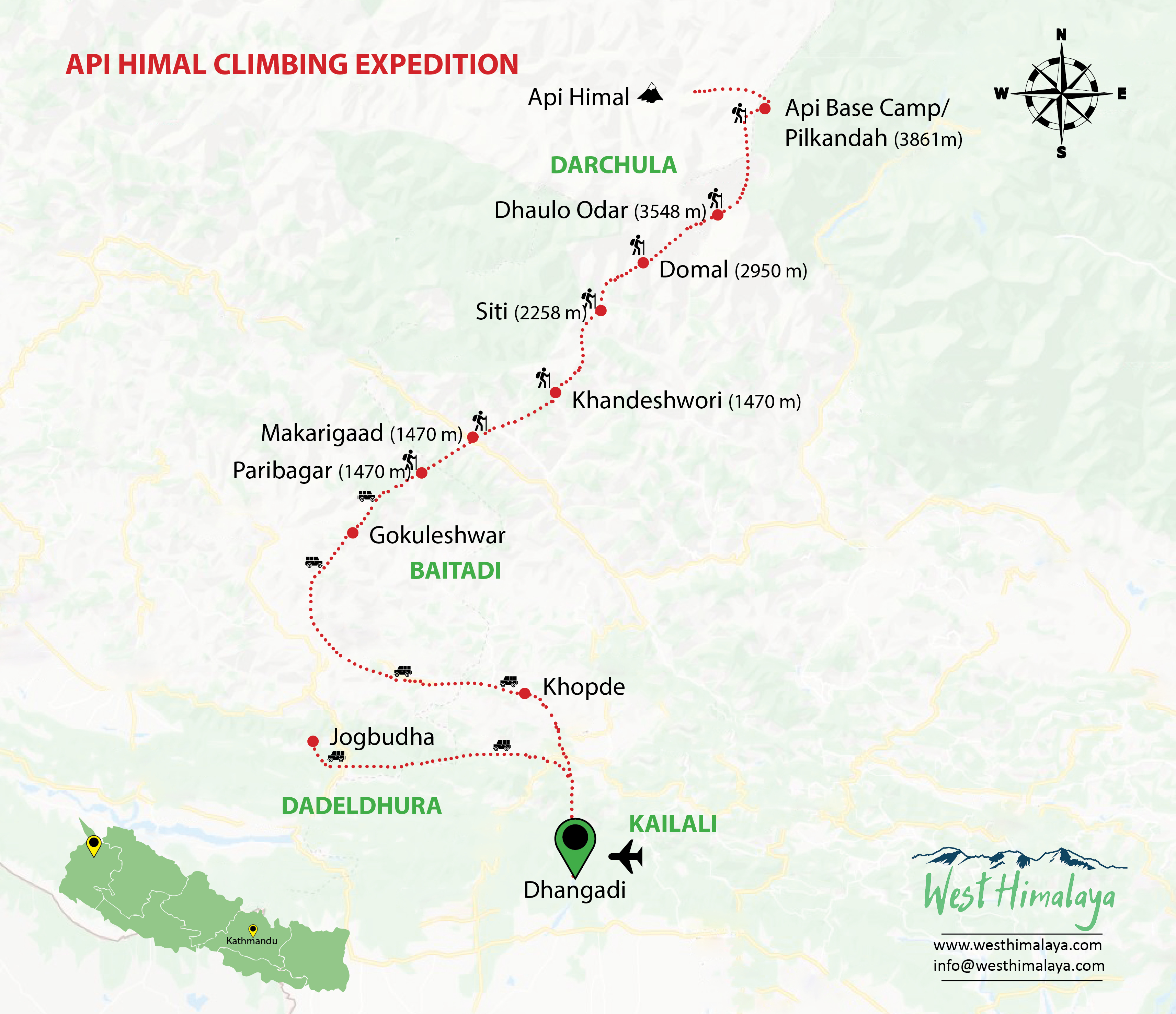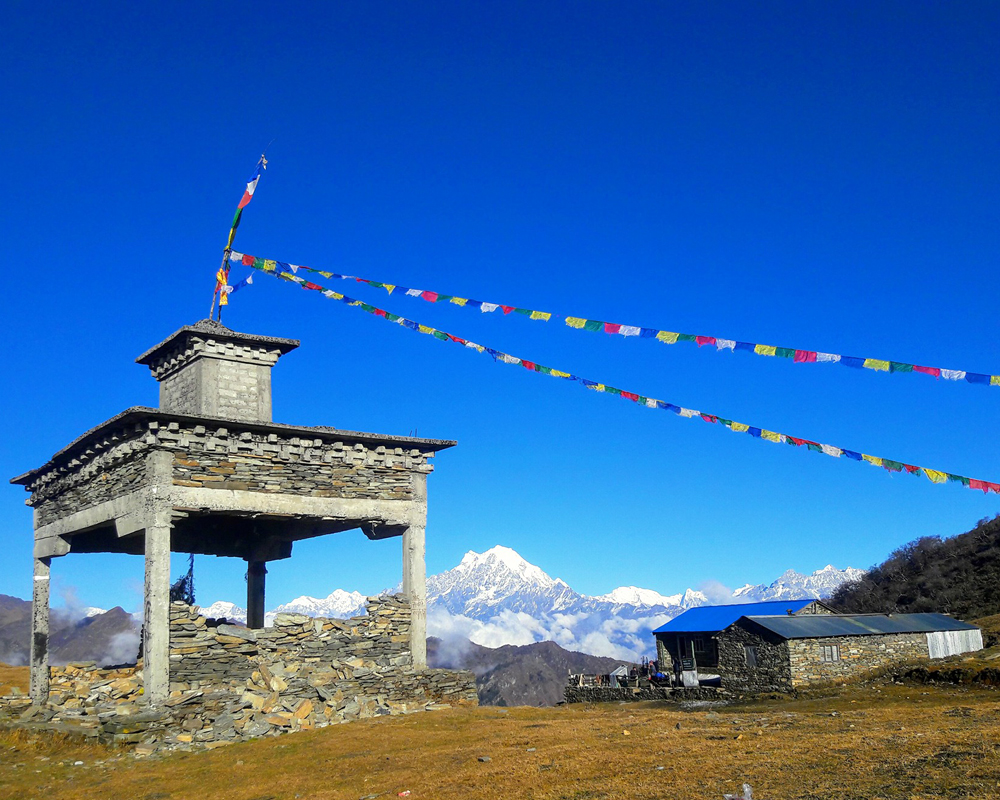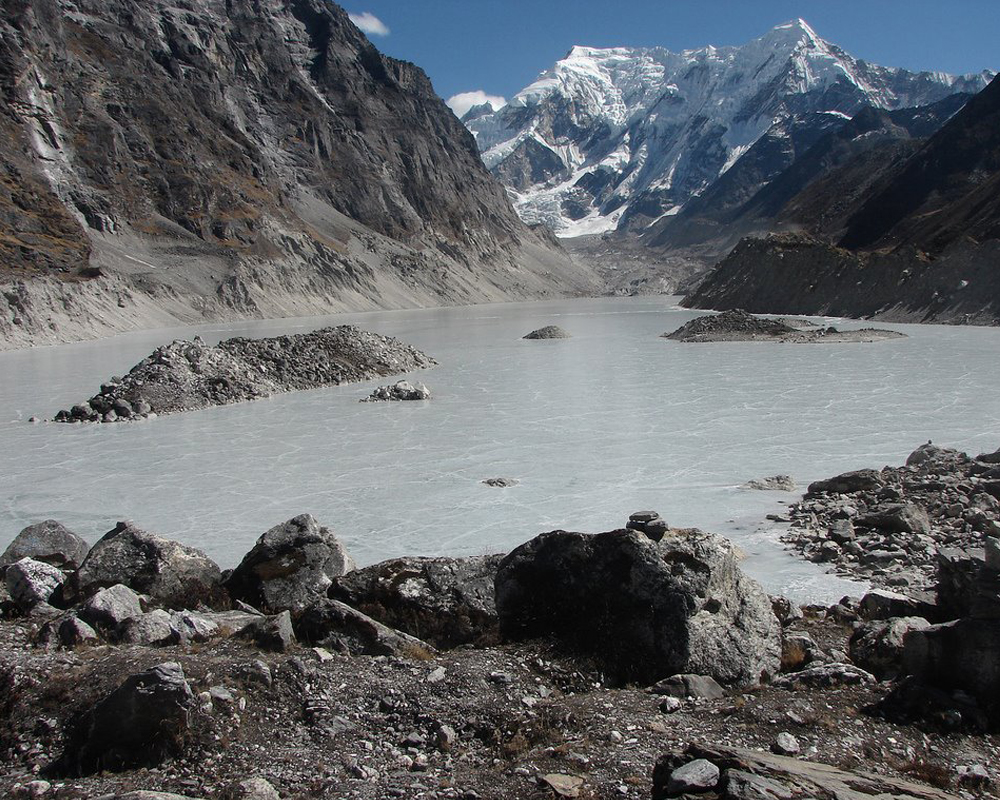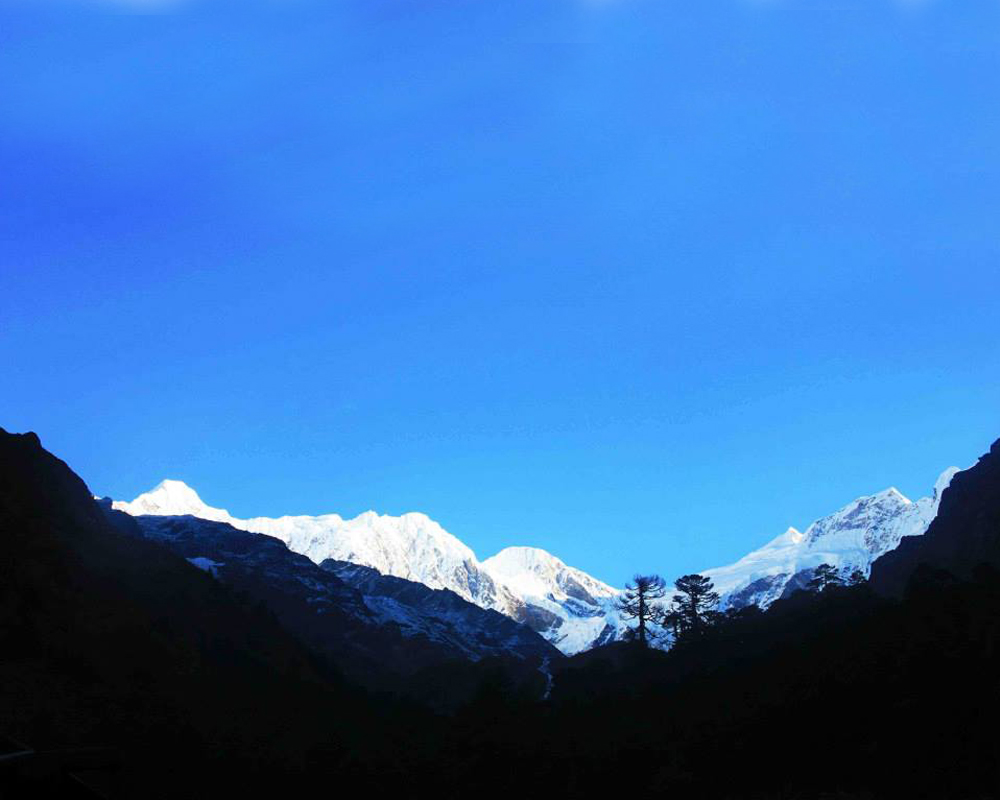- Climbing
- Api Himal
Api Peak Climbing

Trip Highlights
-
Guided expedition to the summit of Api Himal -- the tallest peak of far-western Nepal
-
Hikes to several glacial lakes during acclimatisation
-
Trek into the beautiful countryside of far-western Nepal
-
Exotic flora and fauna of Api Nampa Conservation Area
-
Walk through narrow valleys, high falls, rivers and rivulets, alpine meadows and high passes
-
Get a peek into Masto - a cult of Hinduism
-
Watch locals harvest prized medicinal herbs including Yarsagumba
Overview
Trip Itinerary
Arrival in Nepal
Beautiful mountains, hills and terraced land will greet you once your aircraft enters the Nepali airspace. Very soon, you will land in Kathmandu Valley. Upon arrival at Kathmandu airport, complete immigration formalities and meet your representative outside the arrival lounge. Get transferred to your hotel. In the evening, meet your guide and attend a briefing session.
O/N: HotelSightseeing and Climbing Preparations
Enjoy a sightseeing of different heritages sites of Kathmandu Valley as we complete permits and other documentations for your Api Himal expedition. Drive to Swoyambhunath Stupa in the morning, followed by a trip to Kathmandu Durbar Square and Pashupatinath Temple. All three sites are UNESCO World Heritage sites.
O/N: HotelFly to Dhangadhi
After a leisurely breakfast, start packing for your trek. Your guide will escort you to the domestic airport for an hour-long flight to Dhangadhi. Dhangadhi is a small town lying on the lowlands of far-western Nepal. Upon arrival in Dhangadhi, your guide will transfer you to your hotel. Remaining time is free for independent activities. You can take a stroll in your hotel neighborhood to experience the life in the far-western lowlands of Nepal.
O/N: HotelDrive to Gokuleshwar – Approx 8 hrs
Today, you will drive to Gokuleshwar on the Mahakali Highway. The road is initially on the lowlands but makes a climb to Dadeldhura which is a popular hill station in far western Nepal. It provides magnificent views of mountains on the north. Continuing further, the road climbs up the Chamelia valley to Gokuleshwar – a small hilly town – where you will stop for the night
O/N: Hotel/TentDrive to Latinath (1004m), trek to Paribagar (1170m)
Start driving after having breakfast. A drive of some two hours will take you to a place called Latinath. On the way, you can see far western Nepal’s biggest hydropower project on Chamelia River. At Latinath, meet your support staff who will carry your loads to Api Himal Base Camp and back. A walk of two hours will take you to your campsite at Paribagar. In the afternoon, you can explore the village.O/N: Tent
Trek to Makarigaad (1470m) – Approx 8 hrs
Your trek begins in earnest today. Today, you will be trekking to Makarigaad – a small village by the side of Makarigaad River. The trail passes through traditional villages, terraced land and stone-roofed houses. You will reach to your lunch place after a walk of some three hours. After lunch, a walk of about two and half hours through forests of fir, hemlock, oak and rhododendron will take you to Makarigaad. You can also see ruins of a historic fortress near the village.
O/N: TentTrek to Siti (2258 m) – Approx 7-8 hrs
This is going to be a long day. So, resume the walk after having early breakfast at your camp. From Siti, the trail climbs up steeply through the gorge until you reach the village of Pato (2198 m). Pato is your lunch spot. After a sumptuous lunch, walk uphill until you reach to top of a ridge. From ridge, the trail is leveled till Siti where you will stop for the night.
O/N: TentTrek to Domal (2950 m) – Approx 7 hrs
The trek is easy initially as it’s a downhill walk till the Khayekot (2036 m) where you will stop for the lunch. From Khayekot, the trail is more or less leveled with small ups and downs to Domal. Domal sits on the confluence of Chamelia and Rokap River. Your camp will be set up near the confluence.
O/N: TentTrek to Dhaulo Odar (3548 m) – Approx 5-6 hrs
Today, you will trek to Lower Base Camp of Api Himal. The trail is steep and you will need to gain altitude from the river bank. Continue walking till you reach forests and grazing grounds. Dhaulo Odar, which serves as the lower Api base camp is an open grassland with rhododendron forests topped by high mountains. As the name Dhaulo Odar suggests, ‘Odar’ means cave in Nepali, there are caves in the area. After lunch, you can explore the surrounding areas.
O/N: TentDhaulo Odar (3548 m) to Api Base Camp/ Pilkandah (3861m)
It takes about two and half hours to climb to the high camp. The high camp is an open space surrounded by mountains like Mount Api, Mount Nampa (6929m) and Mount Bobaye (6808m). Lunch will be served after you reach your campsite. After lunch, explore the base camp area. Visit Kalo Pokhari Lake. Going further, you can also visit the source of Chamelia River that you have been seeing by your side since the first day of your trek.
O/N: TentPreparation & Summit
During this two-week period, you will make numerous ups and downs form the base camp to camps set up at higher altitude to prepare you for the summit. The summit day will be selected based on your fitness level, climbing route preparation and weather conditions.
Trek to Siti – Approx 7 hrs
After exploring the base camp, you begin your return journey today. The trip is downhill until you reach the Khayekot village. Your lunch will be served at this village. From Khayekot, it’s an uphill climb initially and lots of ups and downs of Siti where your camp will be set up.
O/N: TentSiti to Makarigaad – Approx 6 hrs
It will be a relatively shorter day today. The journey will take around six hours. Gradually, you will come back into civilization. You will see villages, people toiling in field and children coming back home from school. After a walk of some three hours, you will come to a small settlement called Pato where your crew will prepare lunch for you. After lunch, it’s an easy walk to Makarigaad.
O/N: TentMakarigaad to Latinath – Approx 4 hrs
Today will be another short day. After breakfast at the camp, make a gradual descent toward Latinath from where you started the trek. The trek to Latinath takes approximately four hours. You bid adieu to your amazing support staff today. After lunch, you can take rest in your camp and explore the village.
O/N: TentDrive to Dhangadhi – Approx 8 hrs
After early breakfast at your camp, board a waiting car and start driving toward Dhangadhi. After a drive of some four hours, stop at Khanidanda – a small hill station -- for lunch. Resume driving toward the southern plains of Tarai. You will reach Dhangadhi late in the afternoon. Upon arrival in Dhangadhi, check into your hotel.
O/N: HotelFly to Kathmandu – Approx 1 hr
After a leisurely breakfast, you will be driven to the airport for your flight to Kathmandu. Watch the mountains one last time from hour aircraft seat. Upon arrival at Kathmandu airport, your guide will transfer you to your hotel. Remaining time is free for independent activities. You can just laze around in your hotel room or step outside in the market to buy souvenirs for your friends and families back home. In the evening, we will organize a farewell dinner for you at a restaurant serving typical Nepali cuisines to celebrate the success of your trek.
O/N: HotelDeparture
Our representative will drive you to the airport for your return flight. While returning home, you reflect on the good memories that you had during your trek and plan your next holiday.
Need Assistance?
If you want to customize your trips, need any logistics or permits for filming, guidance for climbing and rafting then feel free to contact us directly and start planning your trip to Nepal.
Bhoj Raj Bhat
+977 9851087675This email address is being protected from spambots. You need JavaScript enabled to view it.
Bishnu Bhattarai
+977 9851230792This email address is being protected from spambots. You need JavaScript enabled to view it.
Book this tour
Equipment List
-
Alpine Climbing HarnessIt should be simply designed, light and easy to carry with positively foolproof features.
-
CramponsIt should be fitted with boots perfectly, still crampons with anti-balling and safely into ice.
-
Ice AxeUsed to cut off the ice during climbing should be versatile light.
-
AscenderAlso known as Jamar, used for ascending on a rope, should be flexible to use with gloves or mittens.
-
Head LampMulti LED headlamp with spare batteries is essential.
-
CarabinersA minimum of two locking carabiners (large and small) and 4 regular carabiners.
-
Rappel DeviceFigure eight, ATC device or similar.
-
Ski PolesVery handy for the approach; adjustable types are the best and are recommended type.
-
SlingsOne 3m/10ft and three 2m/6ft
-
Altimeter Watch
-
Climbing HelmetsShould be light and comfortable.
Clothing
Upper Body
-
Warm sleeved T-shirts
-
Fleece pullover.
-
Fleece jacket.
-
Waterproof and breathable jacket with a large hood to accommodate climbing helmet.
-
Lightweight down jacket for chilly days in base camp or warm layer when stopping for short breaks.
-
Warm goose-down (duvet) jacket with hood or a down/duvet suit if you prefer, for high altitude use.
Lower Body:
-
Briefs
-
Walking shorts for trek
-
Walking trousers for trek
-
Two pair of thermal bottoms
-
One pair of 200 thermal bottoms
-
A pair of fleece trousers
-
A pair of waterproof/breathable trousers with full side zips
-
A pair of Goose-down (duvet) trousers or bibs.
Hands
-
A pair of lightweight poly-liner gloves.
-
A pair of mittens.
Heads
-
Warm wool or synthetic hat that covers your ears
-
Balaclava
-
Scarf or neck sleeve
-
Face mask
-
Ballcap or brimmed sun cap
-
Sunglass with side shields
-
Ski goggles
-
Bandana or headscarf
Sleeping Gears
-
One down (duvet) sleeping bag (rated to –35 C). In the high camp, you can sleep in your down (duvet) clothing inside your sleeping bag;
-
For base camp, one additional sleeping bag (good to -20 C).
-
Three closed cell foam mats for use in base camp and high altitude. We do not recommend inflatable mats due to a high probability of accidental puncture.
Feet
-
A pair of good quality plastic shells with inner boots.
-
A pair of sturdy leather or synthetic hiking boots with good ankle support for the walk to advanced base camp
-
A pair of cross-trainers, running shoes and/or sandals
-
Two pairs of med-heavy poly or woolen socks.
-
Two pairs of polypropylene or woolen sock liners.
-
Vapor barrier liner socks or plastic bread-bags
-
Two pairs of lightweight trekking socks, poly or wool
-
Two pair of cotton sock
Travel Gears
-
One Medium Rucksack (50-70 liters/3000-4500 cubic inches)
-
Two large (120 liters/7500 cubic inches) duffle kit bags for clothing and equipment.
-
Small padlocks for duffel kit bags.



